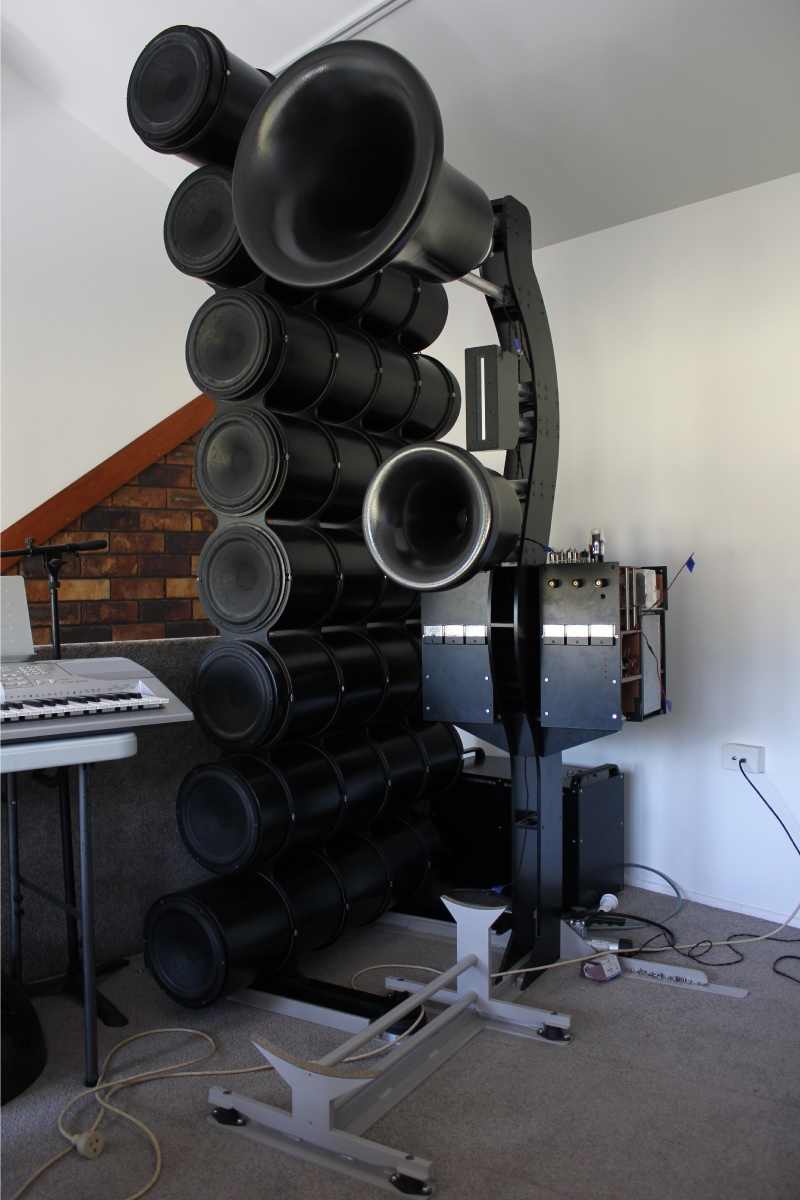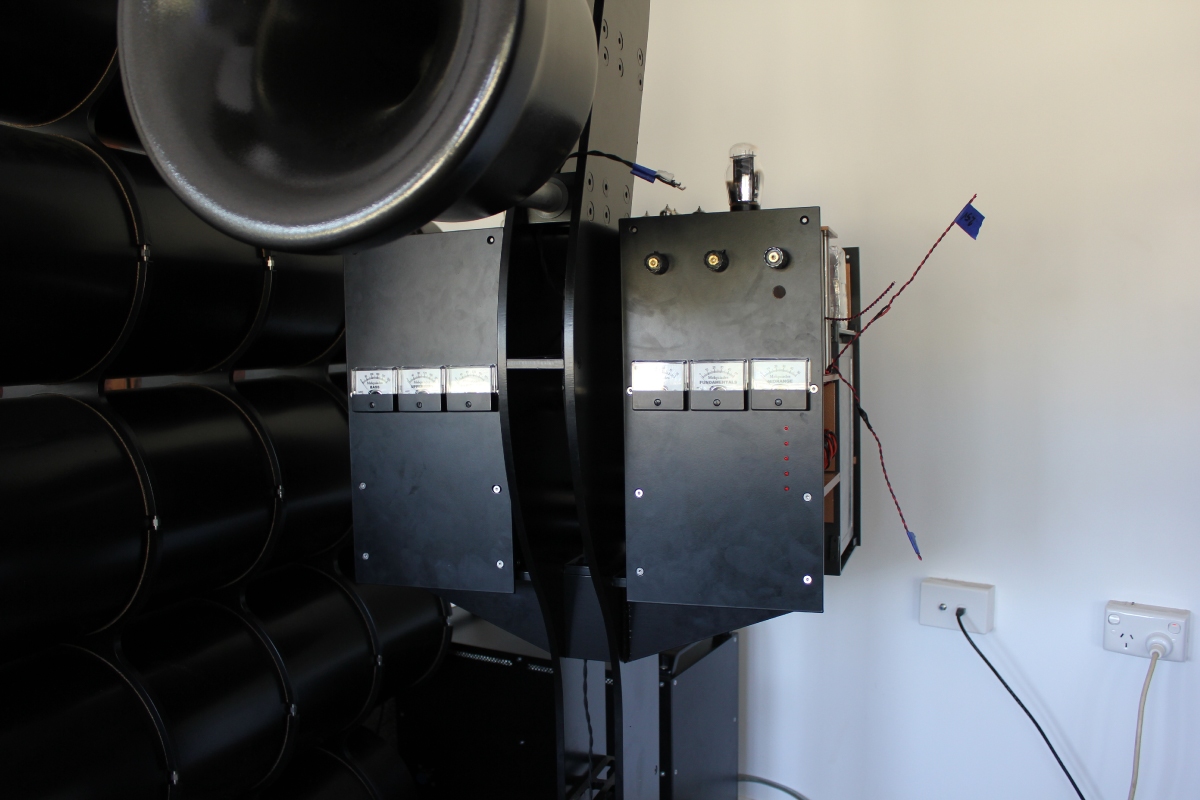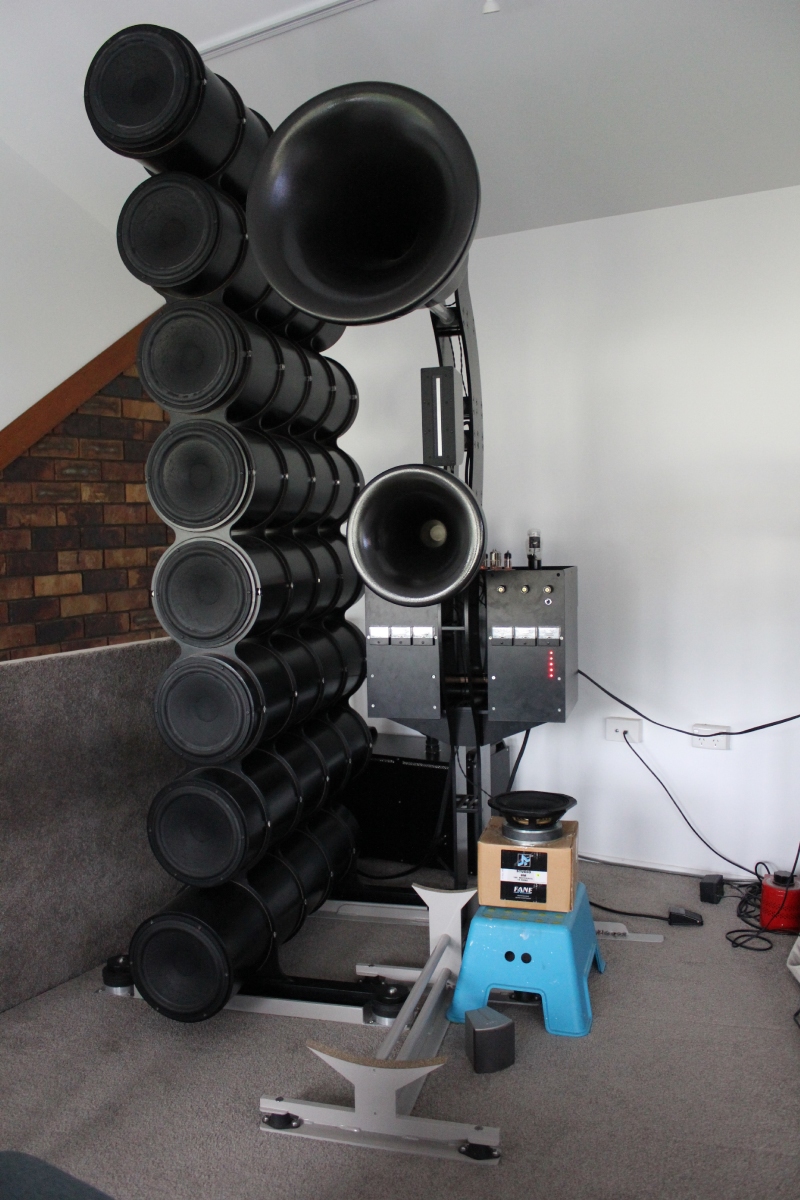Finally, it has happened. Sound.
Two weeks ago I had a couple of mates help me carry up and install the first DSET on its pedestal on the horn stack. It was quite a bit of effort and three were definitely required for the heavy but delicate operations those last few inches into place. Please forgive the sweaty hand-prints all over the black powdercoating, but here she is in place...


There was still a little soldering to do, speaker cables to attach, power cables to route, a few little last minute hiccups to solve. I was so excited to just do it all then and there and light her up and listen that I did not trust myself not to overlook something, so I forced myself to wait. Here and there over a couple of days I did the things necessary to fire her up until there came a moment when I had nothing left to do.
Below is how everything has been hooked up for the past twelve days...

Still no Upperbass horn and the Fane 8M sitting as shown on its box on a stool. Channel C is another of those tiny silver speakers that you can see in front of the blue stool, but it is turned down as far as the attenuation goes. So with zero tuning or tweaking or aligning or other general care and consideration that one would expect is necessary for decent sound, and of course without the full complement of channels and missing perhaps the most important horn, I recorded the very first sounds to come out of my semi-assembled Macondo by playing a song called Reckless, which is very well known in Australia and is sort of appropriate given the way that I have thrown myself into this project.
Romy, I get the idea that you are not favourable about videos of sound being posted, but for me this was a milestone moment, and it was not horrible. I can post the video of the very first sounds if you would like to hear them, just let me know.
In the past 12 days I have listened every day and probably have 80 hours on the amplifier and speakers. I tried going back to the excellent standmounts that I had been listening to previously, but even in comparison to the incomplete mono Melquiades/Macondo they just miss so much...I could not stay listening to them. Now that the valve current draws have stabilised and have been set at the recommended positions things are even more dire for the standmounts. Briefly, I tried altering some operating current on the valves and now have a better understanding of how DSET can be used to shape the sound. It is one thing reading about it but another thing entirely when you turn a knob on the amp and a particular portion of the sound changes...such a powerful tool.
Still Macondo is incomplete and there are sound issues around the bass and upperbass, but mids and highs are delightful. I have performed some initial measurements towards room treatment for bass and the left Bass Cannon in its current position is flat to 18Hz in room, which is excellent, but I do have some work to do to get flatter in-room frequency response below about 150Hz, with some room modes from about 40Hz. Some impromptu trapping made a good start towards this goal, so hopefully over coming months I will eventually have a suitable solution.
So I must say thank-you Romy, for your assistance and willingness and support so far. At this stage I really think that the whole effort will be worthwhile and that I should end up with an acoustic system to keep me satisfied for decades. At least the first sounds are very, very encouraging...
|